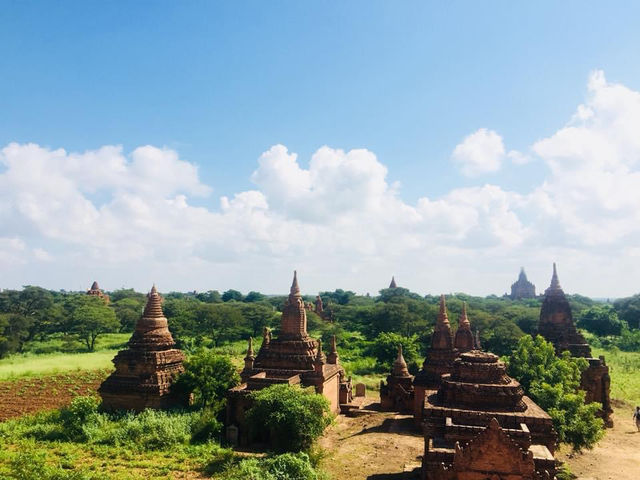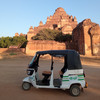BALLOONS OVER BAGAN
Majean Marvels
Best sunrise ever 🌄
Raquel Monreal
Visit Bagan in your life time!
Whynottravel
Incredible sunrise in Bagan, Myanmar
Chefmeetshostel
Mystical Mornings in Bagan
trip2026
Exploring the Mystical Temples of Bagan
SamRichard
Temples in the Sunset Glow 🌅🏰
tristonlong
old Bagan in raining season 🌳🛕🙏
ElizabethND
old Bagan 🛕🥰
ElizabethND
Popular Trip Moments
Mystical Mornings in Bagan | Exploring the Mystical Temples of Bagan | Wonderful Bagan! | Happy Memo | Be Enchanted | Temples in the Sunset Glow 🌅🏰 | old Bagan in raining season 🌳🛕🙏 | old Bagan 🛕🥰 | Surfing time? 🏄🏻♂️ Visit Hainan! | An ancient city in Myanmar | Incredible sunrise in Bagan, Myanmar | Bagan sunset! | Myanmar (Burma) at sunrises and sunsets | Myanmar | Bagan - Land of thousands of pagodas | Bagan | Best sunrise ever 🌄 | Strolling the streets of Bagan. | Ananda Temple. | Trip with freedom | Visit Bagan in your life time! | WONDERFUL BAGAN | BALLOONS OVER BAGAN
Popular Travel Types
Recommended Attractions at Popular Destinations
Bangkok attraction near me | Tokyo attraction near me | Manila attraction near me | Hong Kong attraction near me | Seoul attraction near me | Taipei attraction near me | Los Angeles attraction near me | New York attraction near me | Shanghai attraction near me | Kuala Lumpur attraction near me | Shenzhen attraction near me | Osaka attraction near me | Singapore attraction near me | Guangzhou attraction near me | London attraction near me | San Francisco attraction near me | Beijing attraction near me | Macau attraction near me | Bali attraction near me | Paris attraction near me | Ho Chi Minh City attraction near me | Orlando attraction near me | Jakarta attraction near me | Phuket attraction near me | Chicago attraction near me | Toronto attraction near me | Istanbul attraction near me | Cebu attraction near me | Dallas attraction near me | Seattle attraction near me
Popular Attractions
Nanxun Ancient Town | ArtScience Museum | Park Güell | Disney California Adventure Park | SEA LIFE Sydney Aquarium | Underwater World Langkawi | Grandview Aquarium | Racha Yai Island | SEA LIFE Melbourne Aquarium | Pearl River Night Cruise | Marina Bay Sands | The Bund | Universal Studios Japan | Nami Island | Melbourne Zoo | Columbia Pictures Aquaverse | Siam Niramit Phuket | Yehliu Geopark | Hamdeok Beach | Hanuman Mandir | Izvestiya Kholl | Shirakaba Park | Masjid Al-Hikmah | Jivdani Devi Mandir Mahadwar -1, Pachpayari, Virar | para perros Park | Takamori Nanachome Park | Shiv Mandir | Mesjid Baiturahim | Park
Popular Restaurants in Bagan
Rendezvous | Erawati Raft | Bagan Thiripyistaya Sanctuary Resort | Nooch Bagan | Mar Lar Theingi Buffet Restaurant | Fuji | Welcome Typical Food House | Seabass | ART and Bagan Restaurant | Black House | Great Restaurant | Kabyar Nya -Rhytam Night | Royal Restaurant | Tiffin Box Restaurant | La Min Thit | The Red Pepper | Irrawaddy Fine Dining | Aung Ya Da Nar Restaurant | Aye Tha Har | Golden Bagan U Pho Restaurent | My Friends Resturant | Diamond Arrow | Da Ignazio | Pyinsa Theinkha Culture Show & Restaurant | Spices Garden | Shin Shin Lay Restaurant | Bagan Kitchen | Htar Gyi | Kaung Mon Restaurant | Bravo Restaurant
Payment Methods
Our Partners
Copyright © 2024 Trip.com Travel Singapore Pte. Ltd. All rights reserved
Site Operator: Trip.com Travel Singapore Pte. Ltd. Travel License No. 02943
Site Operator: Trip.com Travel Singapore Pte. Ltd. Travel License No. 02943























